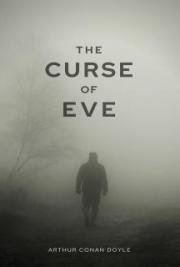Thank you for reading this story.
If you enjoyed it, please leave a comment to my intention at your favorite retailer.
Billy J. Burton
Note to the reader:
I.Q. stands for Intelligence Quotient (term coined by a psychologist named William Stern at the beginning of the 20th century). It’s a score comparing one’s mental ability to that of the rest of the population of one’s country within a certain age range. It follows a bell curve with a mean at 100.
I.Q. tests were first employed to detect children’s mental disability and later to assess adults’ mental ability. It is not a perfect tool and has been the subject of criticism, however, a strong correlation between general intelligence and I.Q. has been shown. In addition, greater accuracy can be achieved by taking several types of I.Q. tests over one’s lifespan.
This notion is not necessarily opposed to the Theory of Multiple Intelligence or the concept of Emotional Intelligence to which it is mainly positively correlated, the main exception being people on the autistic spectrum*1.
Roughly 95% of humanity boasts an I.Q. ranging from 70 to 130. People over 130 are considered ‘gifted’, meaning they are endowed with special neurological skills and a specific type of brain functioning. Their brains involve more cerebral areas while performing a task for greater efficiency*2 and exhibit faster connections*3. However, there are several levels of giftedness, each related to definite personality traits and thought complexity*4. A gifted individual can either be classified as Moderately Gifted (130-144), Highly Gifted (145-159), Exceptionnaly Gifted (160-174) or Profoundly Gifted (175 and above).
The test used in this story, for simplicity’s sake, is not a specific test but shows the usual testing habits of the 90’s. In 2020, the WAIS IV, for example, utilized for adults and adolescents above 16, includes many more subtests but its scale remains unchanged.
* based on the general knowledge shared by mental-health practitioners.
Some of these notions can be found for example:
*1) Wilkinson, Lee, A. Living Autism. For Autism and Neurodivergence.
https://livingautism.com/emotional-intelligence-ei-asd/
*2) Wang, F., Jiang, Z., Li, X, Bu, L., Ji, Y (2021): Functional Brain Network Analysis of Knowledge Transfer While Engineering Problem-Solving.
https://www.frontiersin.org/articles/10.3389/fnhum.2021.713692/full
*3) Gourionova, Natalia A. et al. (2018): Brains of Smarter People Have Bigger and Faster Neurons. Human Brain Project.
https://www.humanbrainproject.eu/en/follow-hbp/news/brains-of-smarter-people-have-bigger-and-faster-neurons/
*4) Powel, P. & Haden, T. (2020): The Intellectual and Psychosocial Nature of Extreme Giftedness.
Roeper Review, Vol. 6 n°3, p.131-133.
https://www.davidsongifted.org/gifted-blog/the-intellectual-and-psychosocial-nature-of-extreme-giftedness/







